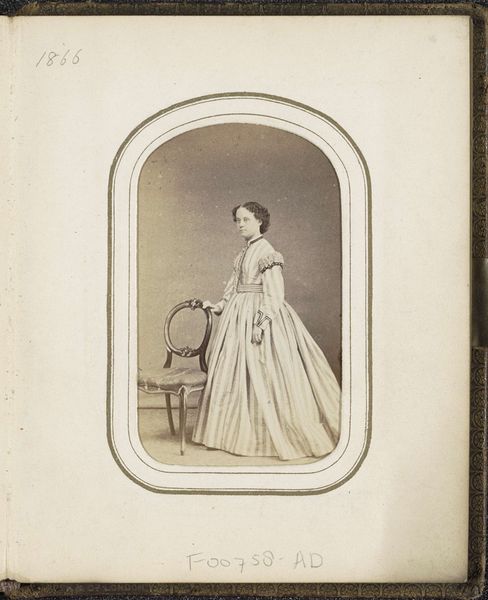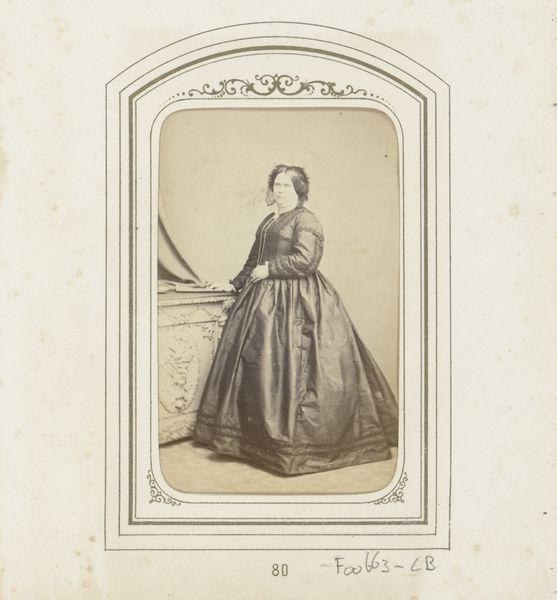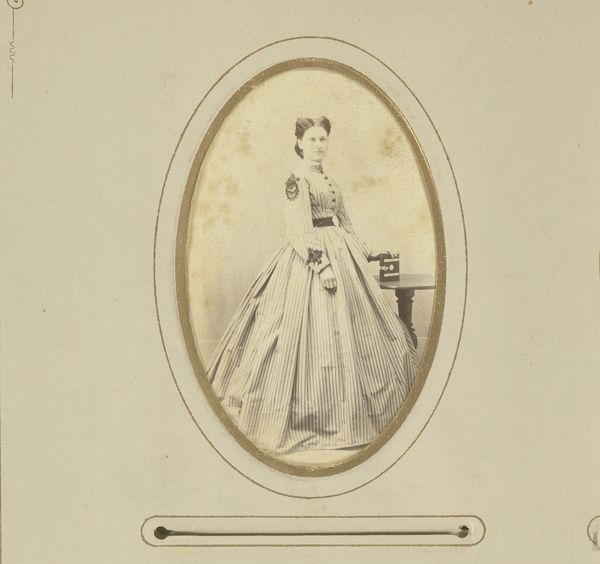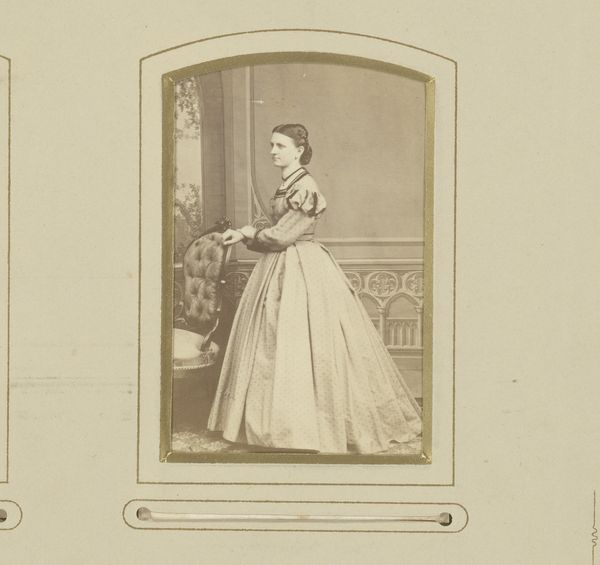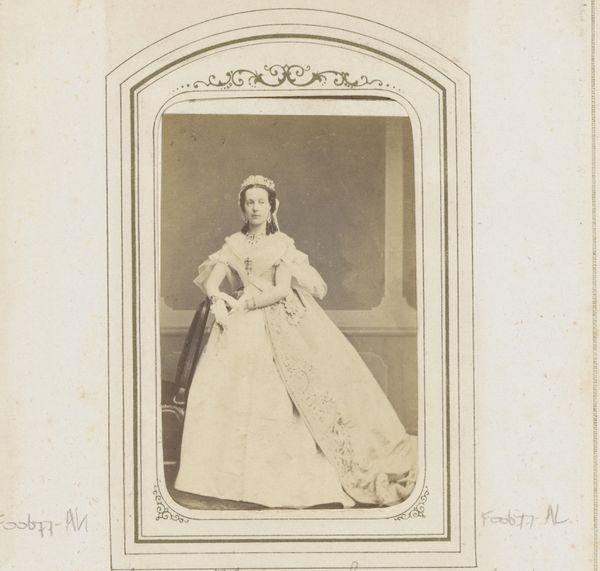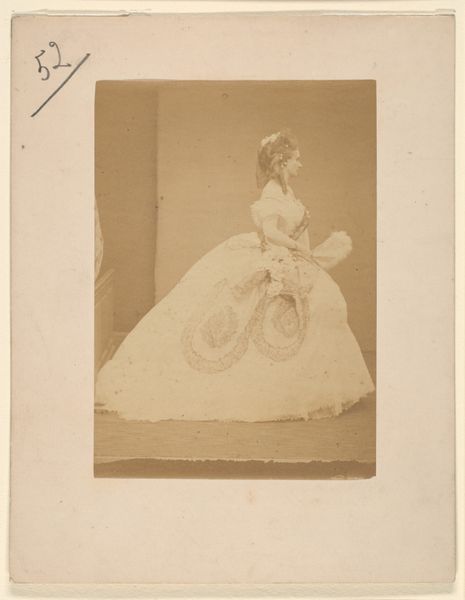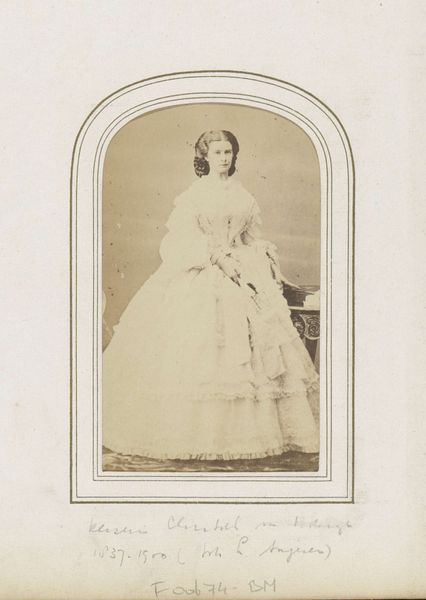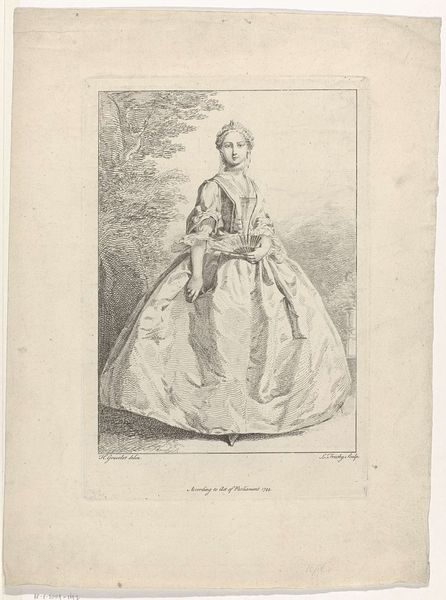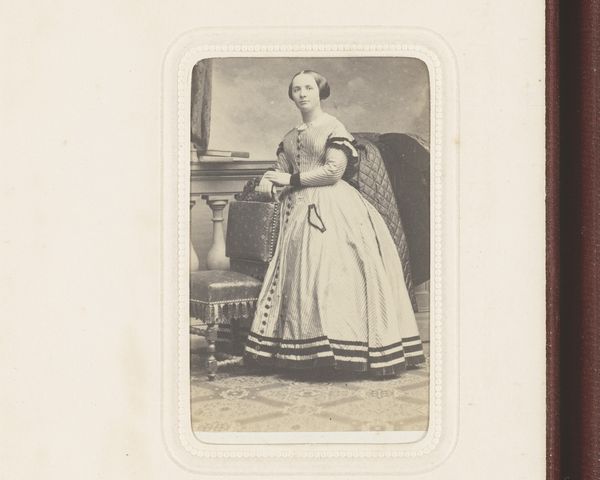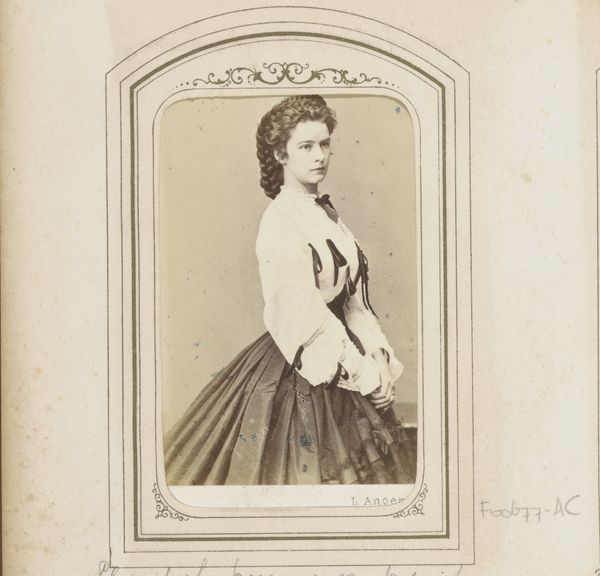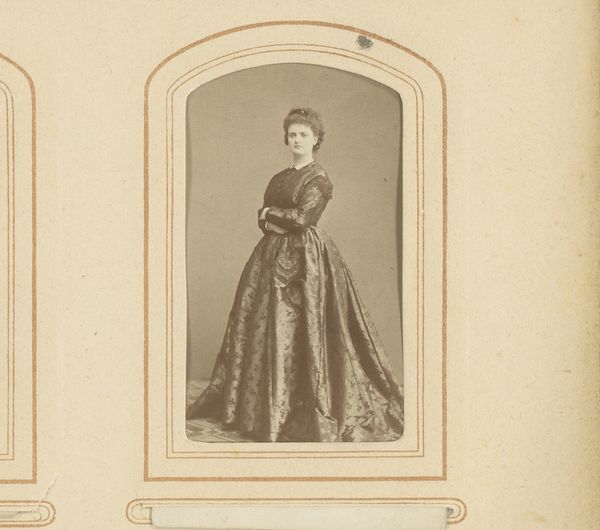
Portret van Eugénie, keizerin van Frankrijk, echtgenote Napoleon III 1855 - 1865
0:00
0:00
Dimensions: height 88 mm, width 51 mm
Copyright: Rijks Museum: Open Domain
Curator: Before us is a photomontage by Mayer & Pierson, known as "Portrait of Eugénie, Empress of France, Wife of Napoleon III." The work, dating roughly from 1855 to 1865, uses a combination of photography, print, and daguerreotype techniques. Editor: The sepia tones and the almost hyper-realistic depiction create an interesting tension. Her presence feels both immediate and distanced, like a ghost from another century materialized right before our eyes. There's a fragility to her gaze, offset by the extravagance of the dress. Curator: Indeed. Think of the Second Empire’s fascination with constructing a specific image of femininity and power. This image, disseminated through print, reinforced ideals about the Empress as a symbol of French elegance and imperial strength. What narratives were actively suppressed or promoted through her depiction? Editor: Absolutely. The voluminous crinoline dress itself acts as a barrier, dictating her personal space and freedom. It embodies a prescribed role. Is she trapped by its splendor or empowered by it? Where does individual agency intersect with the political projection? Curator: Precisely. We can also analyze how the photomontage technique contributes. It was a novel way to craft celebrity portraits, suggesting a staged, constructed reality even then. Editor: A precursor to modern image manipulation, really. We see how early photography becomes a tool not just for documentation but for shaping perceptions. This highlights how power utilizes and controls these emergent technologies to sculpt ideologies. Curator: Exploring the politics behind the visual representation helps us critically assess not just artistic styles but also how images propagate and sustain larger societal structures and biases. Editor: Right, this image goes beyond the surface appeal. By scrutinizing the historical forces and considering gender and class dynamics at play, this photo becomes a window into how those dynamics persist today. Curator: Reflecting on it, it reminds me how portraiture always mediates between personal identity and public expectation, a fascinating tension for photography to capture, even then. Editor: And to me, it’s a poignant illustration of how, even when striving for permanence through art, we’re invariably shaped by the forces of our time.
Comments
No comments
Be the first to comment and join the conversation on the ultimate creative platform.
